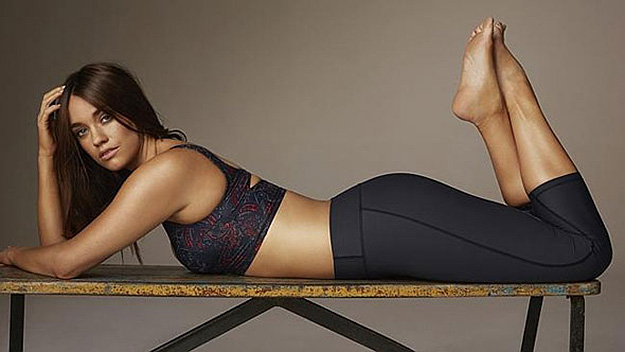As a journalist who has spent much of my youth employed as a “plus size model”, the terms of my job used to be fairly well defined.
‘Plus size’ was a term to differentiate my shape and others like me – curvy, buxom, rounded, fleshy, whatever else you want to call it – from the thin waifish figures that have long dominated the modelling world.
If you were a client and you were looking for a thin model you would call an agency and say, ‘send me a straight size model’. But if you were a client and you wanted a thicker model with a bigger bust or bottom to fill your garments you would call an agency and say, ‘send me a plus size model’. It was the system and it worked – anything above an Australian size 8 = plus size. Conversation over.
Then the internet happened.
Bloggers with social media handles like ‘CholeM_PlusSizeModel’ or ‘CurvyGina_PlusSizeModel’ started gaining huge traction with thousands of followers. But most hadn’t actually worked in the industry (despite claiming the title) and were a good deal larger than what had previously been expected of a working plus-size model.
That’s when the terms and conditions of what plus size actually means got kind of muddled. No longer an industry word, it became a blanket term for non-models to brand themselves.
Suddenly the fit, healthy, curvy professional models identifying with this term every day at work didn’t fit the bill.
Cue internet rage.

The Weekly’s own Jessica Leahy in a recent spread for Cosmopolitan magazine. PHOTO: Bauer.
Earlier this week, Ajay Rochester, a former Biggest Loser host, took to Instagram to criticise Jodhi Meares‘ activewear label, The Upside for including Australian size-14 model Laura Wells in its new campaign.
In a lengthy post Rochester asked: “How the f**k is this woman plus-sized?”
While Ajay was called out for her nasty tone she, like so many others, had simply made the common mistake of confusing the plus-size tag in describing a regular woman’s shape – rather than a model’s shape.
To be clear, Laura is a very healthy size-14 and is just a little less than 6ft tall. She is toned, her skin is glowing and her hair is lush. She is also smart and articulate and hence the reason The Upside, a mainstream brand, chose her as an ambassador for their brand. She was the right fit, in every way.
But instead of celebrating her inclusion Laura has come under attack from Ajay and other detractors who want to say things like, “You aren’t plus-size!” or “For The Upside to call you plus-size that must make me an elephant!”. Well, you might not be an elephant in size @MsHowToBeAnAggressiveAnonymousCyberCritic101 but you have made an elephant size mistake.
Laura wears a size 14, and is technically plus size- in her job, in her industry.

Laura Wells with Jessica Gomes and other ambassadors of The Upside.
The important thing missing from the debate about who gets to be plus size and who doesn’t is that The Upside never called Laura “plus-size” or made reference to her size in the first place. They featured her in a campaign alongside Jessica Gomes and other thinner counterparts without any mention of the label because really, what does it matter if she looks happy and fit? She fits their ethos of health.
And this is where the misuse of the plus-size term gets really problematic. It’s not a conversation that we like to have, but Australia has an obesity problem. Fourteen million Australians are overweight or obese, and slapping a plus-size label on that isn’t going to solve anything.
In fact, maybe as Robyn Lawley – a bona fide size-14 model who was deemed “not big enough” by internet pundits when she recently featured in Sports Illustrated – has suggested maybe we need to do away with the plus-size label entirely and see where we end up. Because it doesn’t do any good when just as the modelling industry is finally starting to welcome ‘larger than a size 8’ models, society seems set on holding onto the plus-size term, under the proviso that it gets to dictate who uses it, and it pretty much means ‘obese’.

Robyn Lawley in her Sports Illustrated debut.
The inclusion of a plus-size model in a ‘straight size’ campaign could have been an important moment for body diversity – one that the successful models like Crystal Renn and Tara Lynn have been paving the way for. Slowly but surely we’re seeing change in the fashion industry – look at how Tara Lynn – who comes in at an Australian size-16 – was featured on the cover of Elle France, and Crystal Renn fronting campaigns for the likes of high-end fashion houses like YSL and John Paul Gaultier.

American model Tara Lynn for Elle France.
The real revolution will be when the world can acknowledge that bodies come in all sorts of shapes and sizes – some of them are model sized, some of them aren’t. We should welcome this, there needs to be diversity. But health shouldn’t be forgotten in the scrabble to re-define a label.
Actual cyber handles aren’t used but are inspired by existing names.

.jpg)
